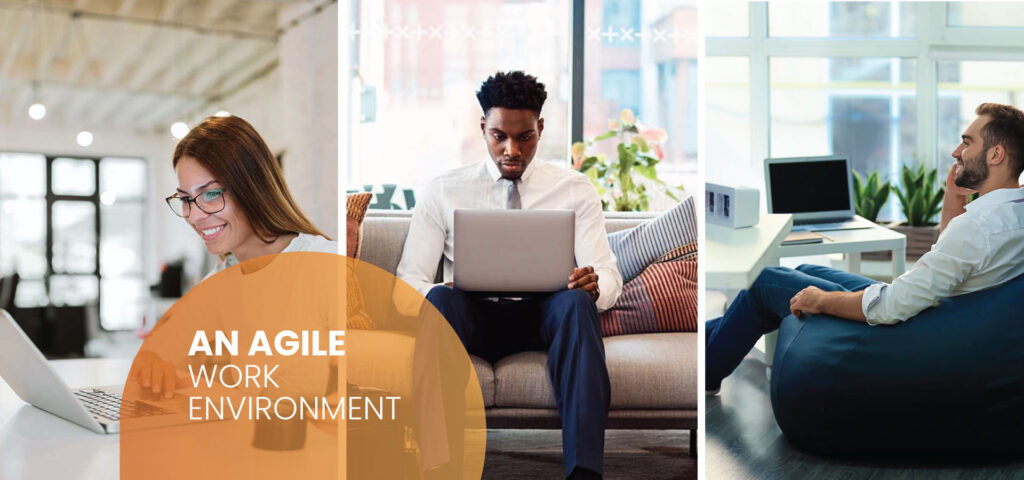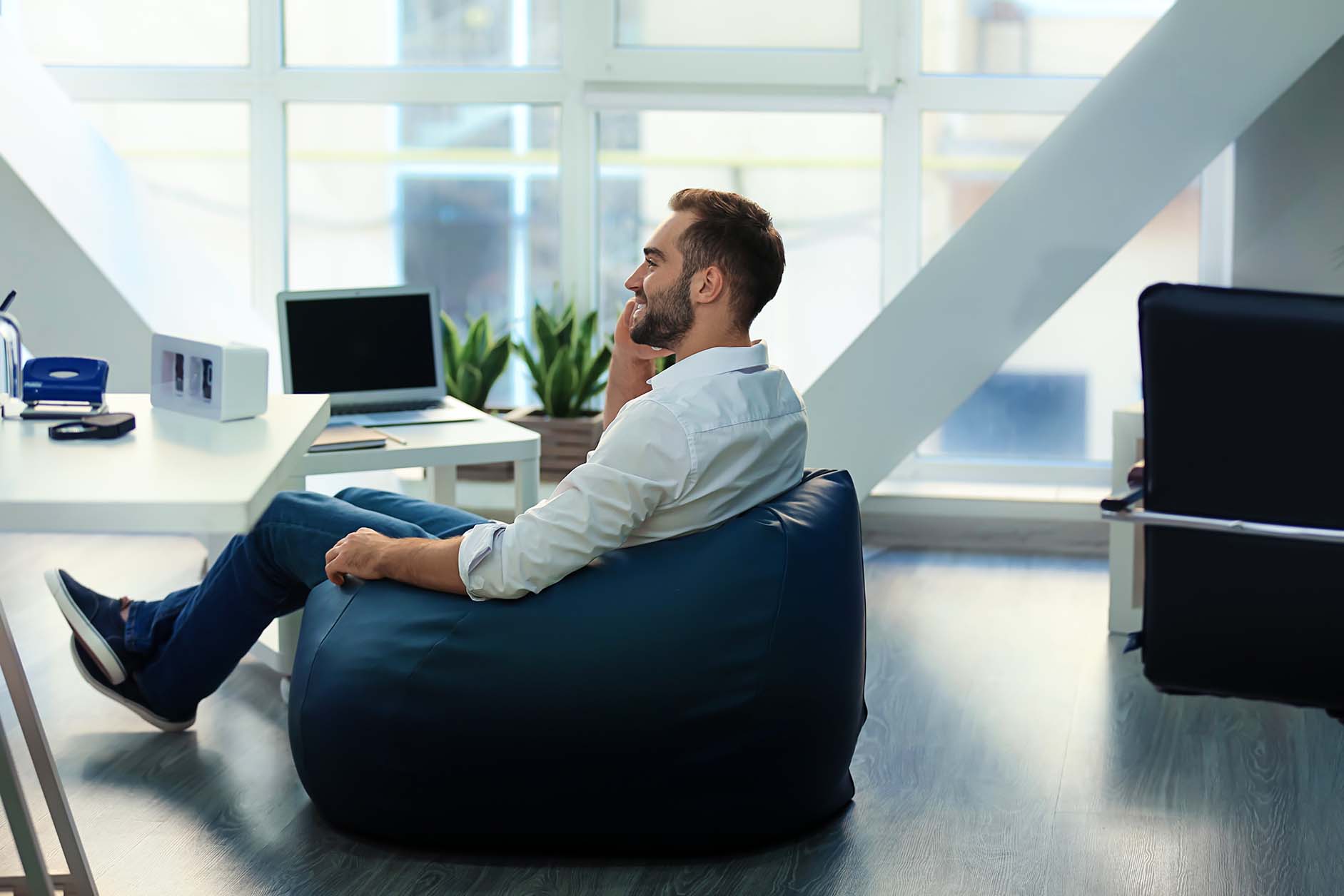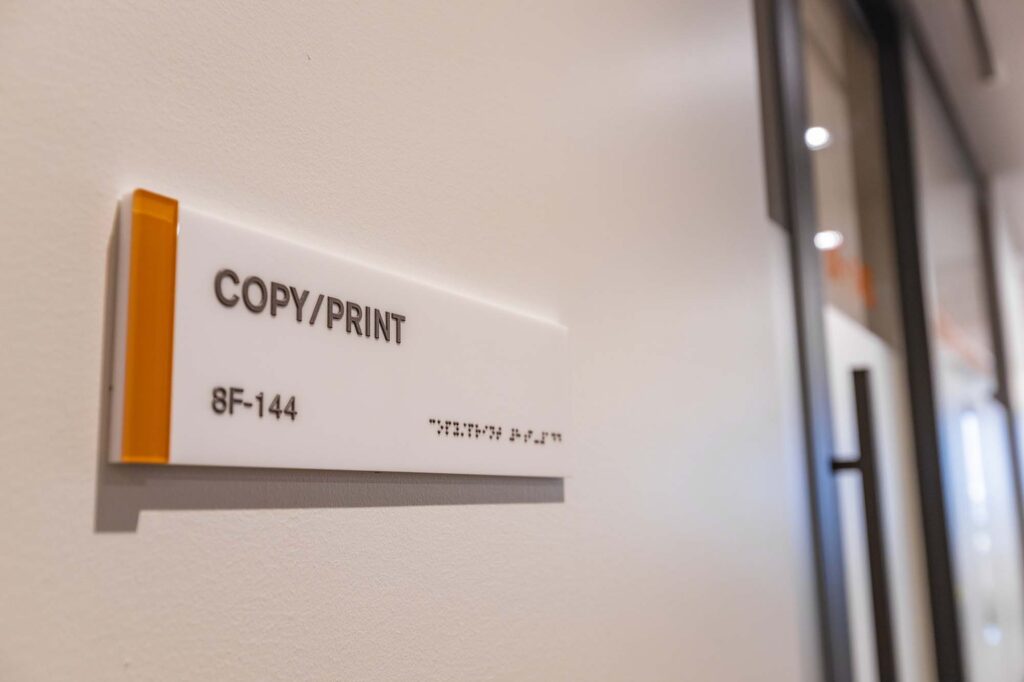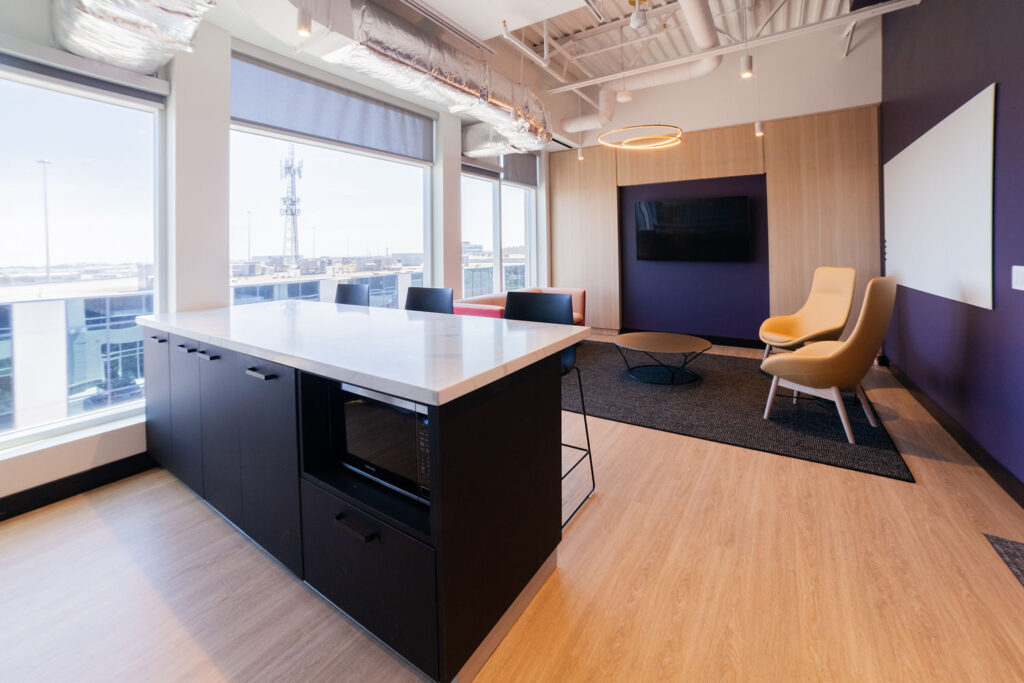What comes to mind when you think of an “agile work environment”? Nimble, quick, alert?
By definition, an agile work environment is a workplace that accommodates the changing needs of employees. A single space might serve numerous purposes at various times for a number of different groups of people. The ability to quickly move in and out of these spaces is what makes them agile.
The main characteristic of an agile work environment is flexibility. In a single day, employees might answer emails, sit in meetings, meet with clients, attend lunch and learns, participate in brainstorming sessions, and take telephone calls all before heading back to their traditional workspace. In an agile environment, work happens everywhere and it is rarely uniform or stationary. Based on these activities, the biggest variable in employee agility is the workspace. By giving employees the proper tools to stay agile and productive means giving them the right space and technology.
Agile working describes how an organization empowers its people to work where, when and how they choose – with maximum flexibility and minimum constraints – to optimize their performance and deliver “best in class” value and customer service. It leverages communications and information technology to enable people to work in ways which best suit their needs without the traditional limitations of where and when tasks must be performed.
Agile workplaces and offices give workers the freedom to make independent decisions on where and how to do their best work. An agile workplace may provide several different curated spaces and flexible seating areas.
Workers have the freedom to make independent decisions on where and how to do their best work in an agile workplace. It may offer several different curated spaces and flexible seating areas. Employees can freely access these spaces and are not required to stay at their assigned desk for the entire workday.
Although not a new concept, the agile working environment represents a radical shift from the highly structured environments of the past.
It involves creating working areas within the office whereby employees have the freedom as well as the flexibility to work where they want and when they want to. An agile workplace makes it possible to increase profitability by focusing on what the employee does, when they want to, and providing office space that meets their needs.
Businesses that adopt an agile working strategy are carefully designed and developed to actively support and encourage a dynamic environment and daily working experience.
While this can also include flexible working hours, agile working is geared towards breaking down traditional barriers between staff and their preferred ways of working, enabling staff to work at their best and most efficient. Agile working brings a sense of trust, individualism as well as collaboration in different industries.
Creating an agile working environment ensures that employees are given freedom as well as space to work where they feel comfortable. This could be a collaborative bench space or a quiet pod – or even just the traditional desk – as long as the employee feels comfortable and can deliver.
Any office space can become effective, efficient and more flexible if it supports a dynamic workforce rather than a static one. By getting rid of desk ownership, an employer can increase its office space capacity. Agile space involves such things as collaboration space, focus space, relaxation space, team meeting space, concentration space (repetitive – same as focus space), inspirational space, and phone conversation space. An agile workplace provides flexible working spaces for different activities in the workplace, ensuring that employees are engaged and productive.
Characteristics of an Agile Environment
What makes a workspace agile and flexible?
- Access. Agility equals flow. Employees need to be able to seamlessly move into and out of spaces. Doors, walls and other elements may create barriers to flexibility. People do not like being confined, especially if their workstyles are dynamic.
- Comfort. Work tasks vary, but comfort is universally required to get work done. Employees who are uncomfortable, on-edge, displaced, or jarred by their temporary environment will spend more time adapting than working.
- Peace. Providing a level of privacy, peace, and quiet is difficult in open, agile spaces. The lower the level of interruption you can bring to a workspace, the easier it is for workers to stay on-task.
- Adaptability. Can someone rearrange the furniture, if necessary? Is there room for a standing desk? Are there enough electrical outlets? Understand the common needs of employees and you will ensure the space can accommodate them.
Attention to design can enhance these fundamental attributes. Good lighting and greenery promote peace. Smart technology supports access and adaptability. Comfortable office furniture lends itself to physical wellbeing. The sometimes seemingly small details matter in an agile space.
Agile Workspace Types
Many smaller, flexible workspaces make up an agile work environment, and they do not necessarily have to be the same. What an agile workspace looks like and how it functions varies widely. Some examples include:
- Breakout meeting spaces
- Experiential spaces
- Open plan spaces
- Quiet work zones
- Resource spaces
- Touchdown and overflow areas
While they may look different, these spaces function in the same way. They account for on-demand needs and conform to diverse expectations. They are what they need to be, when they need to be.
To create an agile workplace, companies should thoughtfully develop a plan in line with their corporate strategy while fostering a culture of trust. Introducing changes without consulting employees can often result in unsuccessful outcomes. When integrating agile working, clients tend to focus on zones for productivity, meetings, collaboration, and socializing.
Take care of your people by taking care of your workspace. Give us a call to speak with our team of registered office interior designers to find out how Mayhew creates and maintains workplaces that work! We are here to help you create the ideal agile office design.





